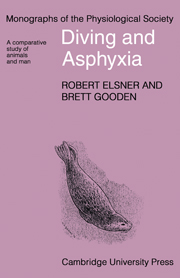1 results in Monographs of the Physiological Society

Diving and Asphyxia
- A Comparative Study of Animals and Man
-
- Published online:
- 18 May 2010
- Print publication:
- 21 July 1983

